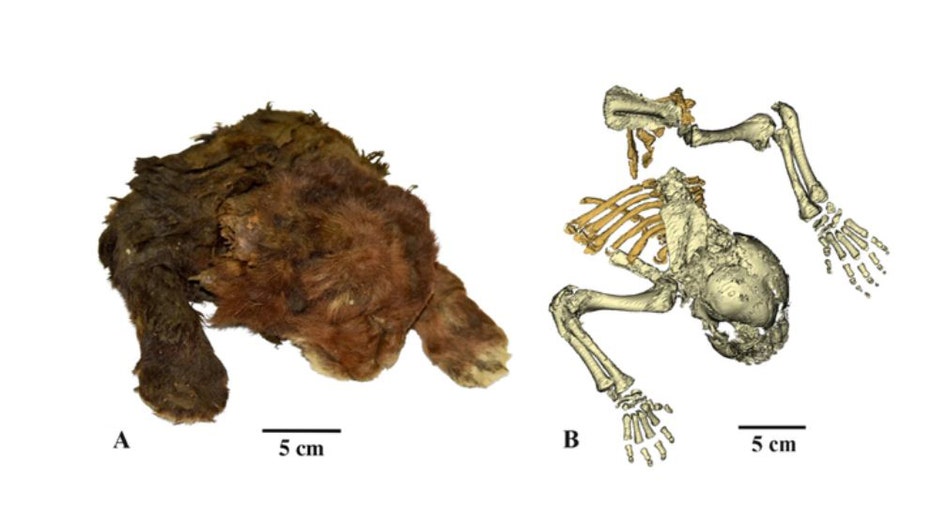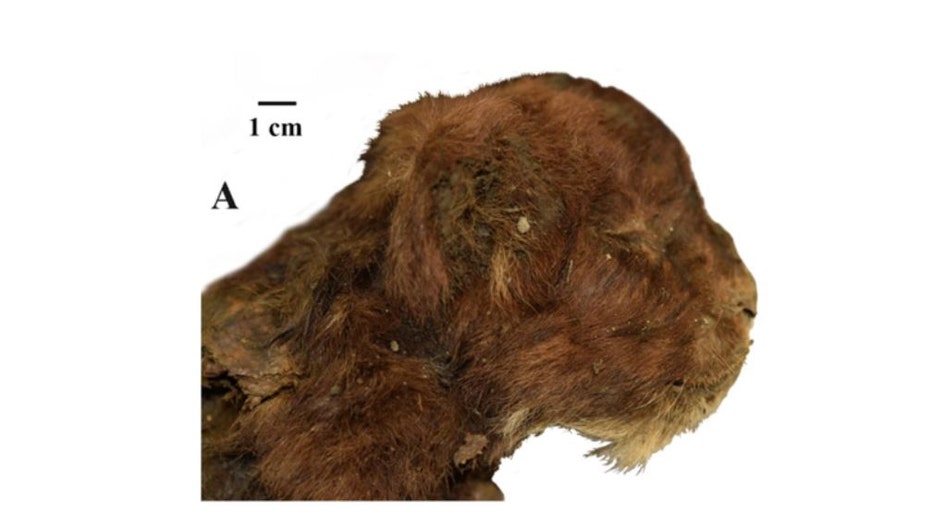See it: Mummified cat cub provides glimpse of what animals looked like
FILE-Archaeologists work at a site searching for artifacts. (Photo by Ma Da/VCG via Getty Images)
In a study published on Thursday, scientists shared their findings on a frozen, mummified sabre-toothed cub discovered in one of the coldest places on the planet.
A member of the species Homotherium latidens, the cub was discovered in 2020 in the Republic of Sakha in eastern Russia. This region can see temperatures as low as minus 90 degrees, according to NASA.
These extremely cold temperatures help create permafrost, or permanently frozen ground, which preserved the mummy of the sabre-toothed cub for at least 35,000 years.

The frozen mummy of Homotherium latidens (Owen, 1846), specimen DMF AS RS, no. Met-20-1, Russia, Republic of Sakha (Yakutia), Indigirka River basin, Badyarikha River; Upper Pleistocene: (A) external appearance; (B) skeleton, CT-scan, dorsal view. (Cr
The mummy, which included the cub’s head down to its chest and its front arms and paws, was encased in a piece of ice. Scientists added that incomplete pelvic bones with the femur and shin bones were also encased.
The cub was so well-preserved in the cold elements that scientists said they were able to conduct a historic first – to study the appearance of an extinct mammal that has no analogs in the modern era.
For example, the fur on the cub was able to be analyzed. Researchers noted that the fur was short, thick, soft and dark brown, measuring about 2-3 centimeters long. The fur was longer on parts of the cub, such as on its back, neck and in the corners of its mouth.

External appearance of three-week-old head of large felid cubs, right lateral view: Homotherium latidens (Owen, 1846), specimen DMF AS RS, no. Met-20-1, frozen mummy, Russia, Republic of Sakha (Yakutia), Indigirka River basin, Badyarikha River; Upper
In addition to the mummy giving scientists a chance to study the cub’s appearance, it also showed how the cub and members of its species were able to survive in a cold climate.
Scientists pointed out that the cub had a wide paw, subsquare-shaped paw pads and the lack of a carpal pad, which are adaptations to the animal traversing through snow and cold temperatures.
Homotherium latidens are the extinct Eurasian cousins of the North American sabre-toothed cats. Scientists say the cats could grow to about 3 feet tall and 6.5 feet long, and weigh nearly 450 pounds.
Get the latest updates on this story at FOXWeather.com

